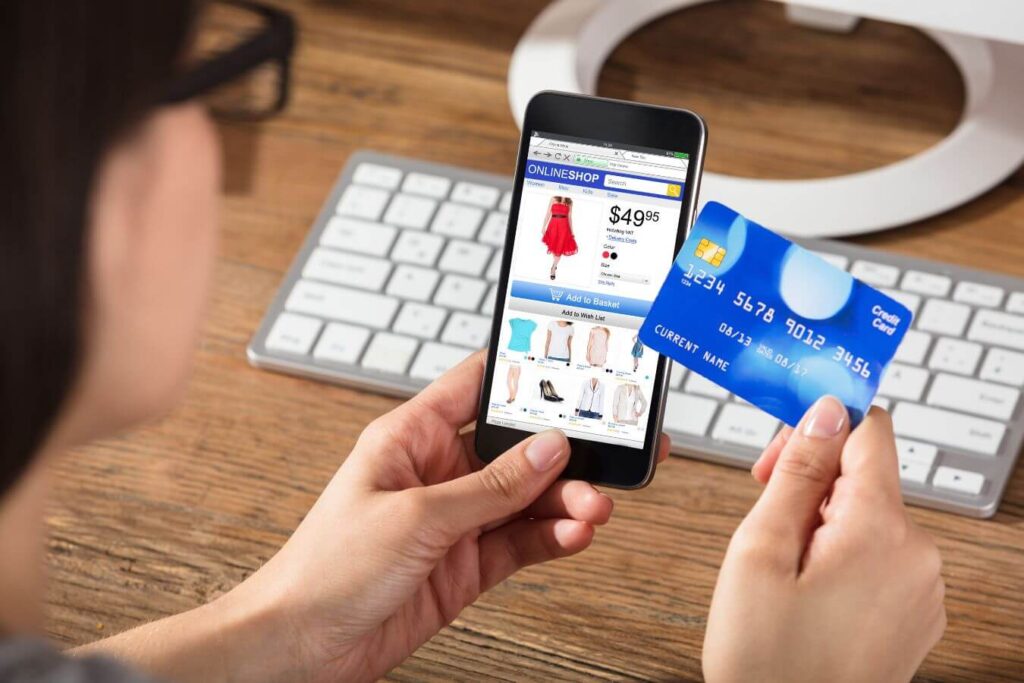Cart abandonment is one of the most frustrating challenges for online retailers. In fact, research indicates that the global average cart abandonment rate hovers around 70%, meaning nearly 7 out of 10 potential purchases are lost at the last minute. While this figure may seem daunting, it also presents a huge opportunity for ecommerce brands to improve their checkout processes, reduce friction, and recapture lost sales.
With advancements in technology and shifting consumer expectations, 2024 brings new possibilities for addressing cart abandonment. This detailed guide will explore the most effective strategies for reducing cart abandonment and optimizing your ecommerce business for success in 2024.
1. Streamline the checkout process
One of the most common reasons for cart abandonment is a complicated or lengthy checkout process. In 2024, consumers expect a seamless, frictionless shopping experience, and any unnecessary steps during checkout can result in a lost sale. To counteract this, the checkout process must be designed to be as straightforward and fast as possible. Here’s how you can achieve that:
- Guest checkout. Many customers abandon their carts when they are required to create an account before making a purchase. Offering a guest checkout option eliminates this friction. Allow shoppers to complete their purchase without forcing them to sign up. You can still encourage them to create an account after the purchase.
- Progress indicators. Clearly show shoppers how many steps are left to complete the checkout process. Progress indicators can give customers a sense of control and transparency, reducing anxiety about how long the process will take.
- Reduce form fields. Long forms with unnecessary fields often frsutrate customers. Focus on collecting only the essential information (shipping address, payment details, etc.) and use auto-fill options where possible to speed up the process.
- Minimize page loads. Instead of requiring customers to move through multiple pages during checkout, consider using a single-page checkout process that dynamically updates based on the customer's input.
2. Offer multiple payment methods
Payment flexibility is another critical factor in reducing cart abandonment. In 2024, customers expect a variety of payment options tailored to their preferences. Not everyone wants to pay with a credit card, and offering alternatives can capture sales that might otherwise be lost. Here are some essential payment methods you should consider:
- Credit & debit cards. Always include traditional payment options like Visa, MasterCard, and American Express for those who prefer them.
- Digital wallets. With the increasing popularity of digital wallets like PayPal, Apple Pay, Google Pay, and Samsung Pay, it's crucial to integrate these options into your checkout process. They allow customers to complete their transactions with a few clicks or taps, particularly on mobile devices.
- Buy Now, Pay Later (BNPL). Services like Klarna, Afterpay, and Affirm allow customers to split their payments over time, making purchases more accesible. Offering BNPL options can significantly reduce cart abandonment rates, especially for higher-ticket items.
- Cryptocurrency. With the rise of digital currencies, some customers may prefer to use cryptocurrency. If your audience is tech-savvy or inclined towards digital finance, accepting cryptocurrencies like Bitcoin or Ethereum can be a differentiating factor.
3. Be transparent about shipping costs
One of the top reasons customers abandon their carts is unexpected costs, especially shipping fees. A lack of transparency around shipping costs and delivery times can lead to uncertainty and hesitation, prompting shoppers to leave without completing their purchase. In 2024, transparency is key to building trust and encouraging customers to proceed with their orders. Here’s how you can improve your shipping information:
- Upfront shipping costs. Provide clear, upfront shipping information on product pages or before the final checkout step. This includes detailing the available shipping options and their respective costs. Offering free shipping for orders over a certain amount can also incentivize customers to complete their purchase.
- Estimated delivery dates. Shoppers want to know when their order will arrive. Providing accurate delivery estimates at checkout can help reassure customers that their order will arrive in a timely manner. Use real-time data and shipping integrations to offer accurate estimates based on the customer's location and the shipping method they select.
- Multiple shipping options. Provide a range of shipping options to suit different customer needs. While some customers may prefer standard shipping, others might be willing to pay more for expedited or same-day delivery. Offering flexible options helps reduce friction and improves the overall shopping experience.
- Shipping insurance & tracking. Clearly communicate whether shipping insurance is included and provide tracking options for peace of mind. The ability to track an order from dispatch to delivery can reassure customers and reduce post-purchase anxiety.
4. Use exit-intent pop-ups
Exit-intent technology allows you to detect when a shopper is about to leave your site without completing their purchase. In these critical moments, you can deploy exit-intent pop-ups to encourage them to stay and complete their purchase. While pop-ups can sometimes be intrusive, when used thoughtfully and strategically, they can be highly effective. Here’s how to use them effectively in 2024:
- Offer a discount. A time-sensitive discount (e.g., 10% off if they complete their purchase within the next 30 minutes) can provide the final push a customer needs to make a purchase.
- Free shipping incentive. Offering free shipping through an exit-intent pop-up can also encourage shoppers to reconsider abandoning their cart. Free shipping remains one of the most compelling incentives for online shoppers.
- Gentle reminders. Rather than simply trying to close the sale with a discount, some exist-intent pop-ups can serve as a gentle reminder. Highlight items in the cart or offer product recommendations that complement the abandoned items. Personalizing the message to the shopper's behavior can increase engagement.
- Seamless experience. Ensure the pop-up is easy to close if the shopper isn't interested. The goal is to enhance their experience, not disrupt it.
5. Automate cart recovery emails
Cart abandonment emails are a tried-and-true strategy for recapturing lost sales. In 2024, these emails remain highly effective, especially when paired with personalization and well-timed follow-ups. Here’s how you can optimize cart recovery emails:
- Personalized messaging. A generic cart recovery email is far less effective than one that speaks directly to the customer's experience. Reference the exact items left in the cart and personalize the email with the shopper's name. This creates a connection between the customer and their potential purchase.
- Timely reminders. Timing is crucial for cart recovery emails. Research suggests that sending the first email within an hour of cart abandonment yields the best results. Follow up with another email after 24 hours and a final one within 48 to 72 hours.
- Incentives for action. If a customer still hasn't completed their purchase after the first email, offering a small discount or incentives, like free shipping, in the follow-up can help seal the deal. This added value makes it harder for the shopper to resist returning to their cart.
- Scarcity and urgency. Highlighting stock scarcity or limited-time offers can create a sense of urgency. If an item is running low in stock, let the customer know. Similarly, emphpasize any deadlines for sales or discounts.
6. Build trust with security badges
With increasing concerns about online privacy and security, customers want reassurance that their personal information is safe when shopping on your site. Trust badges and security seals from reputable organizations like Norton, McAfee, TRUSTe, or the Better Business Bureau, play an essential role in reducing cart abandonment.
- Display SSL certificates. Ensure your checkout page is encrypted with SSL (Secure Socket Layer) technology and display the SSL certificate badge. This assures customers that their payment information is secure and helps build trust.
- Use recognizable payment gateways. Partner with well-known and trusted payment providers (e.g., Stripe, PayPal, or Authorize.Net) and display their logos. These logos serve as visual indicators of your commitment to safe and secure transctions.
- Customer reviews & testimonials. Displaying customer reviews or ratings on product pages can also help build trust. Shoppers are more likely to complete a purchase when they see positive experiences from others.
7. Make your website mobile-friendly
In 2024, mobile commerce (m-commerce) will continue to grow, with more customers making purchases directly from their smartphones. If your ecommerce site is not fully optimized for mobile devices, you risk losing a significant portion of your audience. Ensuring a smooth mobile experience is essential to reducing cart abandonment. Here’s what you need to focus on:
- Responsive design. Your website should automatically adjust to fit the screen size and resolution of any device. A mobile-responsive site ensures that customers have a smooth and consistent experience, whether they're on a smartphone, tablet, or desktop.
- Mobile-friendly checkout. Simplify the checkout process for mobile users by reducing the number of steps, offering one-click payment options, and minimizing form fields. Features like one-tap checkout (e.g., with Apple Pay or Google Pay) allow users to complete their purchase with minimal effort.
- Fast-loading pages. Mobile users expect websites to load quickly. Slow-loading pages are a leading cause of cart abandonment. Optimize your site's loading speed by compressing images, using caching, and minimizing the use of heavy scripts.
- Touch-friendly navigation. Make sure that buttons, links, and form fields are appropriately sized and easy to tap on smaller screens. A well-designed mobile navigation system can make the shopping experience smoother and reduce frustrations.
8. Provide real-time support with live chat
Many customers abandon their carts due to unanswered questions or doubts about their purchase. Offering real-time support through live chat or chatbot systems during the checkout process can address their concerns and help them feel more confident about completing their purchase.
- AI chatbots. In 2024, AI-driven chatbots are more intelligent than ever, capable of handling common customer inquiries in real-time. Whether it's a question about shipping times, return policies, or produuct details, chatbots can provide instant answers, reducing the likelihood of abandonment.
- Human support. While chatbots are helpful for straightforward inquiries, more complex questions may require human assistance. Ensure that customers can easily connect with a human respresentative if needed. Offering 24/7 support is ideal, but if that's not feasible, provide clear information about support avalability.
- Proactive engagement. Use proactive chat triggers based on customer behavior. For instance, if a customer has been idle on the checkout page for a certain amount of time, a message like, "Need help with your order?" can prompt them to engage with your support team before abandoning their cart.
9. Clarify your return and refund policies
A major reason customers hesitate to complete a purchase in uncertainty about returns and refunds. In 2024, ecommerce businesses must emphasize their return and refund policies to build trust and reassure customers that they’re making a risk-free purchase. Here’s how to structure a customer-friendly return policy:
- Simplified return process. Make it easy for rcustomers to understand how they can return an item if they're unsatisfied. Clearly outline the steps for returning an item and whether it can be done online or in-store (if applicable).
- Free returns. Offering free return shipping is a huge incentive for customers. If you can afford it, this policy can significantly reduce cart abandonment rates by easing concerns about the cost of returning unwanted items.
- Flexible refund options. Provide multiple refund options, such as store credit or a direct refund to the customer's original payment method. Be transparent about refund timelines and ensure the process is quick and hassle-free.
- Display policy prominently. Make your return and refund policies easy to find on product pages, during checkout, and in post-purchase emails. Don't hide the information in fine print, as this can create distrust.
10. Personalize the shopping experience
In 2024, personalization will play a pivotal role in shaping the future of ecommerce. Shoppers expect tailored experiences that reflect their preferences, behavior, and needs. By leveraging data analytics, machine learning, and AI, you can create personalized shopping experiences that keep customers engaged and reduce abandonment.
- Product recommendations. Use customer data to recommend products based on previous purchases, browsing history, or items left in the cart. Personalized product recommendations can help customers discover new items they're likely to purchase and increase average order value.
- Dynamic pricing & offers. Tailor discounts or promotions based on customer segments. For example, offer returning customers a loyalty discount or send first-time visitors a special welcome offer. Dynamic pricing can also be used to target specific demographics or geographic locations.
- Abandoned cart reminders. Use personalized emails or SMS messages to remind customers of the items left in their cart. Include personalized messaging, such as, "Hey [Customer Name}, we noticed you left [Product Name] in your cart. Here's a discount just for you!"
- Location-based personalization. Personalize the shopping experience based on the customer's location. Offer region-specific promotions, language options, and relevant currency and payment methods. This localization helps create a seamless experience, regardless of where the customer is located.
Conclusion
Cart abandonment is a complex issue, but it’s not insurmountable. By focusing on optimizing the checkout process, providing transparent shipping information, offering personalized experiences, and addressing customer concerns in real-time, you can significantly reduce cart abandonment and boost conversions in 2024. Incorporating these 10 strategies into your ecommerce business will not only help recover lost sales but also create a better overall shopping experience for your customers.





